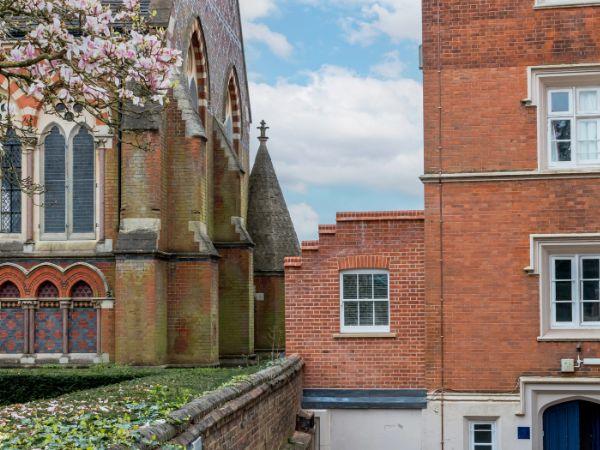Notifications
7 minutes, 31 seconds
-21 Views 0 Comments 0 Likes 0 Reviews

When it comes to building homes that feel as good as they look, comfort is no longer just about soft sofas and tasteful decor. True comfort begins with temperature, air quality, and the serenity of a quiet, energy-efficient space. That’s where Passive House Hertfordshire leads the way, setting new standards in home design and construction. But what exactly makes a passive house so remarkably comfortable—and how is it transforming residential living in Hertfordshire?
Understanding the Passive House Standard
Originally developed in Germany, the Passive House standard is a globally recognised benchmark for energy-efficient building design. It focuses on five core principles:
Together, these features create a tightly controlled indoor environment where temperature, humidity, and air quality are consistently maintained—no matter what the weather outside.
Why Hertfordshire Is Embracing Passive Design
Hertfordshire’s mix of charming period properties and modern estates offers a unique canvas for sustainable building innovation. As homeowners become more environmentally conscious and energy prices continue to climb, many are turning to passive house principles to future-proof their homes.
Whether building new or retrofitting older properties, the Passive House model aligns perfectly with Hertfordshire’s drive to combine modern comfort with responsible living.
All-Year Comfort Without Compromise
Traditional homes often suffer from hot summers and cold winters, with fluctuating indoor climates and high energy demands. Passive houses maintain a consistent indoor temperature year-round, usually between 20–25°C, without relying on conventional heating or cooling systems.
This is achieved by maximising solar gain in winter and preventing overheating in summer. Advanced insulation and airtight seals prevent drafts and cold spots, offering unparalleled thermal comfort in every room.
Silent Living: The Hidden Luxury
One often-overlooked benefit of passive homes is their silence. Thick insulation, airtight design, and triple-glazed windows work together to block external noise from traffic, neighbours, and even wind. This creates an environment of calm and stillness—perfect for relaxing, working from home, or raising a family.
In busy towns like St Albans, Watford, and Stevenage, where road noise is common, the peace of a passive house makes a tangible difference to quality of life.
Fresh, Filtered Air 24/7
Forget stuffy rooms and stale smells—passive houses use MVHR (Mechanical Ventilation with Heat Recovery) systems to provide a constant supply of clean, filtered air. These systems remove pollutants, allergens, and moisture while retaining indoor warmth.
For residents with asthma, allergies, or sensitivities, the improved air quality in a passive home can be life-changing. It’s not just about comfort—it’s about health.
Energy Efficiency That Pays Off
Comfort doesn’t have to come at a high cost. Passive houses consume up to 90% less energy for heating and cooling than standard homes. That translates into lower bills, greater energy independence, and a smaller carbon footprint.
While the initial cost of building a passive house can be higher, the long-term savings in running costs and maintenance offer excellent value. In the current climate, this financial predictability is a major advantage for homeowners and investors alike.
What to Look for in a Residential Contractor
If you’re thinking about building a passive house, choosing the right builder is key. You’ll need a team that understands high-performance detailing, building science, and the unique challenges of passive construction.
Working with an experienced residential contractor Hertfordshire who has a track record in low-energy homes ensures your project is executed with precision. From insulation strategies to window installation, every detail matters in a passive build—and cutting corners simply isn’t an option.
Retrofitting vs New Builds
While passive houses are often associated with new construction, retrofitting existing homes to meet passive standards is gaining traction. Known as EnerPHit (the retrofit equivalent of Passive House), this approach combines the best of both worlds: preserving the charm of traditional buildings while upgrading their performance.
In Hertfordshire, where many homeowners want to modernise period properties without sacrificing their heritage, EnerPHit offers an ideal compromise.
Design Freedom With Performance Built In
Some believe energy-efficient homes have to look boxy or bland—but that couldn’t be further from the truth. With the right architect and builder, passive homes can be sleek, modern, minimalist, or traditional. The passive house standard doesn’t dictate style—it enhances performance behind the scenes.
Whether you’re building a countryside retreat or an urban family home, passive principles can be tailored to your vision.
Planning Permissions and Support
Hertfordshire local authorities are increasingly supportive of sustainable construction projects. Passive house builds often align with planning goals for energy reduction and environmental impact.
There are also incentives and grants available in certain cases, particularly when retrofitting older homes. Speaking with your contractor or a passive house consultant early on can help you access these benefits.
Comfort Without Compromise
In a world where we spend more time indoors than ever before, the importance of home comfort cannot be overstated. Passive House Hertfordshire proves that it's possible to enjoy year-round thermal consistency, fresh filtered air, quiet surroundings, and low energy bills—all in one beautifully designed home.
Whether you're building new or upgrading an existing home, embracing the passive house approach offers comfort you can feel and savings you can count on.

